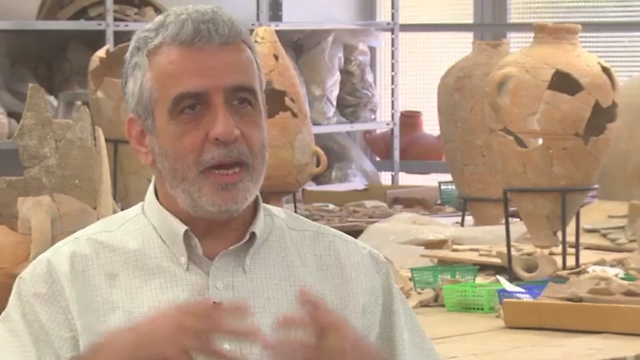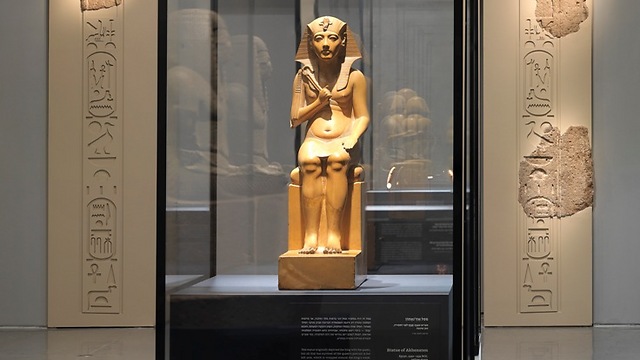Archeological researchers find no evidence that the biblical Exodus as recounted in the Passover story happened, but rather the Egyptians ruled Israel during that period and that it was they who eventually left, though gradually.
Contrary to the biblical story that recounts the tale of the people of Israel leaving Egypt, the common view among mainstream archaeologists is precisely the opposite: the ancient Egyptians were the ones who ruled the land of Canaan, and they are the ones who left the Land of Israel to return to Egypt.
Prof. Israel Finkelstein of Tel Aviv University, an internationally renowned expert in biblical archaeology, explained the historical background of the biblical Exodus story as revealed from archaeological excavations: “In the Late Bronze Age, from the 15th century to the 12th century BCE, Egypt dominated the Land of Israel. Of course, after 350 or 400 years of Egyptian rule in Israel, influences of Egyptian culture entered the Land of Israel in various areas of everyday life. Then two things happened that are related to that same issue: there was a complete collapse of urban centers and of kingdoms and empires in the ancient Middle East, and Egypt withdrew from Israel!”

Based on the archaeological finds, the biblical Exodus story’s the time period, it was actually the Egyptians who ruled the Land of Israel. There is much material evidence scattered across the country. A prominent example of the Egyptian regime in Israel is the large Ramses fortress, the remains of which are hidden beneath the hilltop of Old Jaffa.
Dr. Yitzhak Paz, a senior archaeologist with the Israel Antiquities Authority (IAA), said, “Three thousand five hundred years ago, there was an important fortress here as part of Egyptian rule in Israel. The concrete restoration of Egyptian fortress’s gate is based on the discovery of some of the ruins of the monumental original gate. The gate had an inscription from which one can learn that it was constructed during the reign of Pharaoh Ramses II.”

The Egyptian entertainment center in Tel Aviv
Archaeologist Diego Barkan of the IAA surprised many in Israeli archeology when he found an ancient Egyptian brewery in the middle of Tel Aviv during an excavation. “Right here 5,500 years ago was an Egyptian brewery in central Tel Aviv, between Hamasger Street and Yitzhak Sadeh Street. We found the remains of dozens of clay jars in which ancient Egyptians produced beer.
“Egyptians did not drink beer as we drink it today; it was part of the basic food and nutrition, even for children. It was very surprising to find in the middle of Tel Aviv an Egyptian brewery of such an ancient time, some two thousand years before the Exodus. This local tradition of modern Tel Aviv partiers imbibing beers on Allenby Street is a very ancient tradition – a 5,500 year-old tradition.”

According to the researchers’ physical findings, the Egyptians ruled the Land of Israel, and the children of Israel did not leave Egypt, so the question remains: How was the Jewish people formed?
Finkelstein explained the hypothesis prevalent in the university research mainstream:”‘Ancient Israel’ sprouted around the time close to the end of the Egyptian rule of Israel. There is a very ancient Egyptian inscription, outside the Biblical text, which mentions ‘Israel,’ and it dates from the late 13th century BCE.
“At that time, there was a very strong settlement process in the central mountains of the Land of Israel. Hundreds of farming villages were founded, and this is the population that several centuries later created the kingdoms of Israel and Judah, so you can call them ‘ancient Israel.’ But it was generated primarily from the local population of the original Canaanite Land of Israel.”

The Egyptian hieroglyphics that are proudly displayed in the middle of Old Jaffa expose a small part of the story of the Egyptian occupation of the Land of Israel during the same approximate period as the biblical story of the Exodus.
Dr. Paz deciphered the ancient hieroglypics: “Down there we see the name of the pharaoh, the king of ancient Egypt: Ramses. We see the symbol of the deity Ra with the sun on his head. we see the symbol that represents MS that looks like the Hebrew letter shin but upside down, and below there are lines that represent the S sound. “.
Dr. Paz added, “There is no archaeological evidence of the Exodus event, in which 600,000 men were supposed to have participated, which means two million people including families, for the simple reason that of all the surveys conducted in Egypt, not one has revealed any activity in this period. The event of the Exodus from Egypt as described in the Bible is probably an event that never took place.
“As an archaeologist and scientist, I can judge only according to findings, and the findings do not support the myth of the Exodus. The fact is that no Egyptian document has yet been found that describes an historic event of an exodus out of Egypt of such proportions. People left, people went back, people fled, but on a very small scale and not on the scale as described in the Bible.”
Professor Finkelstein highlighted the problematicalness in comparing the biblical text to scientific research of the same period: “It is absolutely clear that the author of the biblical text that describes the Exodus story does not recognize the reality of Israel during the Late Bronze Age, because he does not describe the Egyptian reign over the Land of Israel! It’s therefore clear that it’s a text that has multiple layers that were not necessarily written in the same period.
“The latest archaeological evidence shows that the collapse of the Canaanite kingdoms in Israel was long, at least 100 years; that is, it wasn’t a military campaign of one group with one general, who led them for a campaign of conquests, leading to the destruction of all the Canaanite cities of the Late Bronze Age. But this does not mean that one should reject outright the history of the biblical story. Archeology can’t answer if person X or Moses or Jacob are historical figures if there are no inscriptions from that time; archeology can’t give an answer to such a question.”
As reported by Ynetnews
